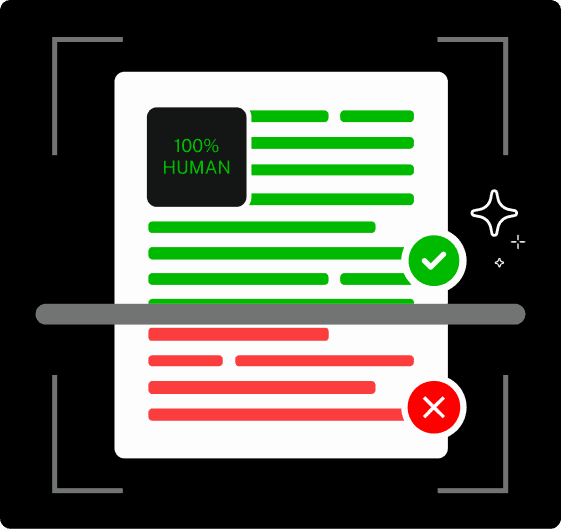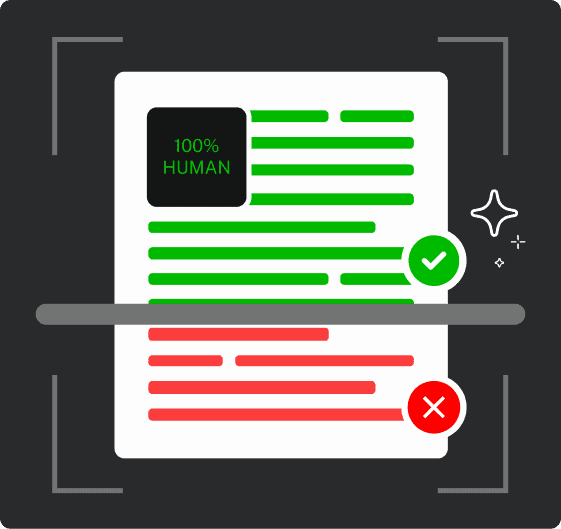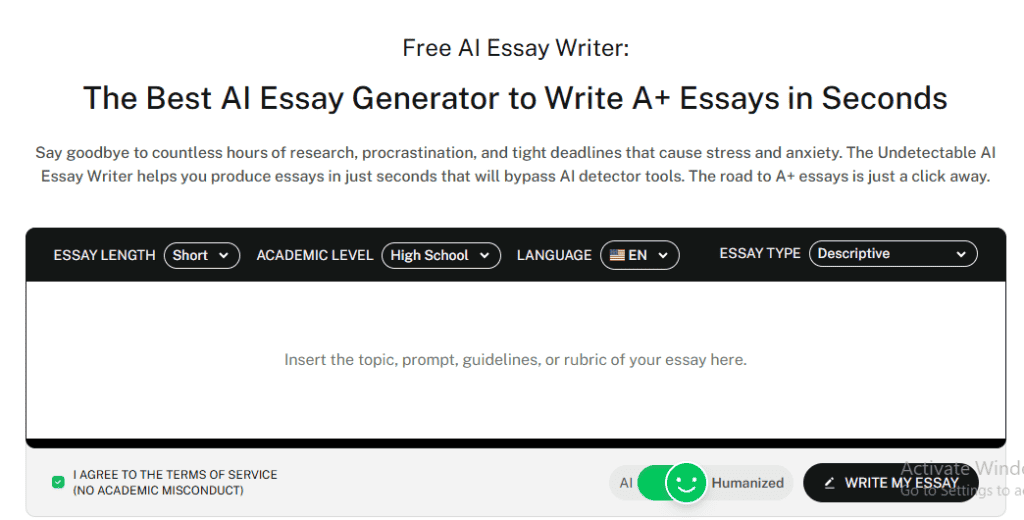If you’ve been assigned a research project or anything remotely academic in psychology, education, or the social sciences, there’s a good chance your professor told you to find an empirical article.
And if you immediately opened a hundred browser tabs trying to figure out what that actually means, you’re not alone.
But exactly what is an empirical article? Is it just a fancy term for a research paper?
How do you know if an article is empirical or just theoretical? And wait, can you accidentally cite the wrong kind?
These questions come up all the time, and that’s exactly why this guide exists.
Let’s begin.
Key Takeaways:
- An empirical article reports original research based on observed data, not just opinions or theory.
- These articles follow a clear structure: abstract, introduction, methods, results, discussion, and references.
- Empirical research includes both quantitative (numbers, patterns) and qualitative (feelings, behaviors) approaches.
- You can spot an empirical article by looking for data, methodology, charts, and a detailed reference list.
What Does Empirical Mean?
Before I tell you what is an empirical article, you must know the meaning of empirical.
The word empirical basically comes from the Greek word empeiria, which means “experience.”
Not like, “I experienced bad cafeteria food,” but more like “observing, measuring, and documenting something in a structured way.”


Never Worry About AI Detecting Your Texts Again. Undetectable AI Can Help You:
- Make your AI assisted writing appear human-like.
- Bypass all major AI detection tools with just one click.
- Use AI safely and confidently in school and work.
Back in the day, this idea was kind of revolutionary.
People started saying, “Okay, I’m not just going to take your word for it. Show me the evidence.”
That shift launched the entire scientific method as we know it.
Today, when something is empirical, it means it’s based on observed and measurable evidence. Not opinions or vibes but actual data.
If someone says they did an empirical study, they probably used tools like surveys, interviews, lab experiments, or statistical analysis to figure something out.
In fact, a big part of what makes something scientific is this dependence on empirical testing.
A theory like “industrialization leads to worker alienation” doesn’t mean much unless someone can prove it by observing actual workplaces and measuring alienation in some reliable way.
With that said, let’s explore what is an empirical research article.
What Is an Empirical Article?
An empirical article is one where the authors conduct original research.
They start with a research question or hypothesis, something like “Does screen time affect sleep quality?” and then they go out and gather data to find out.
Maybe they run a survey. Maybe they monitor participants in a sleep lab.
Whatever the method, their point is test ideas in real life.
Once they’ve collected the data, they analyze it, interpret the results, and discuss what those results mean in the context of the research question.
Then they wrap it up, often by suggesting future research directions, and publish it so the rest of the academic world can read it, challenge it, or build on it.
Empirical vs. Theoretical vs. Review Articles
At a glance, many academic articles look similar.
But once you know what to look for, it becomes easier to distinguish what is an empirical article from its cousins: theoretical and review articles.
Here’s a quick side by side comparison:
| Aspect | Empirical Articles | Theoretical Articles | Review Articles |
| Focus | Present original research and data gathered through observation or experimentation | Explore or refine theories, concepts, or models | Summarize and synthesize existing research on a specific topic |
| Methodology | Use structured data collection (quantitative, qualitative, or mixed methods) | Based on logical reasoning and conceptual analysis | Based on secondary analysis of previously published studies |
| Content | Includes data, results, and analysis from the author’s own study | Discusses theoretical frameworks, new models, or abstract ideas | Compares findings from multiple empirical and theoretical sources |
| Structure | Follows the typical research article format: intro, methods, results, discussion, etc. | Less rigid; focuses on developing ideas and supporting them with citations | May use thematic sections or chronology; includes citations throughout |
| Purpose | Contribute new findings to a field using empirical evidence | Advance academic understanding by proposing new perspectives or refining old ones | Provide an overview of existing knowledge, highlight trends, and suggest gaps |
| Example | A study collecting survey data on how remote work affects productivity | An article proposing a new ethical framework for AI usage | A review of recent studies on climate change impacts on agriculture |
Key Components of an Empirical Article

Sure an empirical article is the one that covers a real life research, but what about the insides of such an article?
More precisely, what is the structure of an empirical journal article?
While different journals might switch up the titles or even merge a few sections together, most empirical articles tend to follow a pretty recognizable format.
The structure very carefully walks the readers through every part of the study, from the “Why are we doing this?” to the “Here’s what we found.”
Below is a complete list of essential components you’ll usually find in a standard empirical article:
Abstract
This is a short paragraph that sums up the whole study. It briefly mentions the research question, methods used, a quick peek at the results, and sometimes a line or two about the implications.
If you only read the abstract, you’ll get the gist, but not the full picture.
Still, it helps readers decide whether they want to dig deeper into the article or move on.
Introduction
The introduction sets the stage. It usually starts by explaining the background of the study, why the topic matters, and what gap in knowledge the researchers are trying to fill.
You’ll also find the research question or hypothesis here, basically what the authors are trying to prove, test, or explore.
Literature review
Sometimes this is blended into the introduction, but in more detailed articles, it stands alone.
This section walks through previous research related to the topic, showing what’s already been discovered and how the current study fits into the bigger academic conversation.
It’s where researchers show that they have done their homework.
Methodology (or Methods)
This section details how the study was carried out. The methodology section is crucial because it allows other researchers to replicate the study or challenge its methods if needed.
It usually covers things like:
- Who the participants were (demographics, sample size)
- What kind of study design was used (experimental, survey, observational, etc.)
- What procedures did participants went through
- What instruments or measures were used (like surveys, lab equipment, or interview protocols)
Results
This section presents the data that was collected, usually through tables, graphs, and sometimes statistics with an explanation.
It’s important to note that this section lays results just as what they are. It doesn’t go into the implications of the results. That happens in the next section.
Discussion
The discussion section explains what the results actually mean in relation to the original hypothesis.
Did the data support it? Were there any surprises? What are the broader implications?
Researchers also use this section to compare their findings with previous studies, mention any limitations of their research, and suggest areas for future study.
Conclusion
Not every article has a separate conclusion, but when it’s there, it wraps everything up in a concise way.
It restates the main findings and their relevance by offering one final summary of what we learned and why it matters.
References
Every source the authors cited throughout the article is listed here, usually in APA or another academic style.
This section also acts as a way for readers to track down the original sources and see how the study was built on previous work.
If you’re serious about researching the topic, you’ll probably find your next five reading assignments right here.
Now you know exactly what is the structure of an empirical journal article.

If you ever happen to be writing an empirical article, you can use our AI Essay Writer to draft structured sections based on your research data.
Types of Empirical Research

Now that we’ve explored the structure of an empirical article and what goes into it, the next logical question is, what kind of research are we actually dealing with inside these articles?
Because not all empirical studies follow the same path.
Depending on what the researchers are trying to find out and how they choose to go about it, empirical research typically falls into two main types:
- quantitative
- qualitative
This distinction matters a lot, especially when you’re figuring out what is an empirical research article is trying to achieve and how it’s built.
Quantitative Research Articles
Quantitative research relies on collecting numerical data to identify patterns, test relationships between variables, and sometimes even predict future outcomes.
The questions it asks are usually very specific and structured.
For example, those questions can be of the following pattern:
- how many
- how often
- what extent
Researchers use tools like surveys, polls, and longitudinal studies to gather this kind of data, often from large sample sizes.
This type of research is especially useful when you’re trying to establish causality.
In other words, it doesn’t just ask “what’s happening?” it tries to answer why it’s happening, and whether variable A is causing variable B to do something measurable.
For example, a study might collect data from 300 students to see if more screen time leads to less sleep.
The findings are expressed through percentages, averages, or statistical models, basically anything that can be measured and quantified.
Qualitative Research Articles
On the flip side, qualitative research pertains to the more human side of things.
Instead of numbers, it focuses on understanding thoughts, behaviors, feelings, and experiences.
The data here isn’t measured in charts but is usually gathered through interviews, focus groups, open-ended questions, or observational studies.
This type of research is less about “how much” and more about “why” and “how.”
The approach is also typically more flexible and exploratory.
Researchers might speak with a small group of participants and ask them to share personal experiences or beliefs related to the research topic.
For example, instead of measuring how many people are anxious, a qualitative study might explore why people with a certain condition tend to feel anxious in specific situations.
How to Identify an Empirical Article
Now, how do you spot an empirical article in the wild?
Because here’s the thing: not every article that sounds scholarly is actually reporting original research.
And if you’re trying to figure out what is an empirical research article versus a theoretical or opinion-based one, it’s easy to get tripped up if you’re just judging by the title alone.
To help make this process easier, here are some clear indicators that you’re looking at a genuine empirical research article:
Check the Source
Look at where the article was published. Empirical articles are almost always found in academic, scholarly, peer-reviewed, or professional journals.
If it’s coming from a popular magazine like Time, Psychology Today, or WebMD, it’s probably not empirical. Journals like the Journal of Communication Research or JAMA are much more likely to publish research studies.
Read the Abstract Closely
The abstract is your shortcut. It often gives away whether the article is reporting on a study.
Look for mentions of things like data collection, participants, surveys, experiments, observations, or interviews. If it says something like “We conducted a study with 200 participants,” you’re likely on the right track.
Look for Signs of Original Research
Ask yourself: Is this article describing a new study that the authors conducted themselves?
Empirical articles usually mention methodology, measurements, and the actual process of data collection and analysis.
If the authors are summarizing other people’s research, then it’s probably a literature review or theoretical piece, not empirical.
Scan for Data Presentation
Empirical articles often include data in visual form. You’ll likely see charts, graphs, tables, or appendices filled with statistics.
Consider the Length
Empirical articles tend to be substantial. Most empirical research papers often run anywhere from 8 to 30 pages, depending on the depth of the study.
If it’s a three-page opinion piece, that’s probably not what you’re looking for.
Bibliography or Reference List
A solid empirical article always includes a list of sources at the end.
This shows which previous studies the authors referenced to design and support their own research. It also lets you dig deeper if you want to look at the broader research landscape.
Still Not Sure? Seek Help
If you’re on the fence about whether an article qualifies as empirical, don’t be shy about asking a librarian or a professor for a second opinion.
Especially when you’re new to academic research, it’s totally normal to need a little backup.

But before you ask for help from others, make sure to run your questions through our AI Chat. It will help you interactively verify if a source is empirical.
How to Write an Empirical Article
By this point, you’ve already got a solid grasp of what is an empirical journal article supposed to look like in terms of structure.
So now the only question remains: how do you actually write one?
You just need to organize your research into the standard framework you’ve already learned: abstract, introduction, method, results, discussion, and so on.
You already know what goes in each section. Your job now is to populate those sections with your own data, findings, and insights.
But before you go about populating the sections, there are a few things to keep in mind:
- Make sure you have a clear research question or hypothesis. This should guide every decision you make, from study design to how you interpret your results. If your research doesn’t have a specific focus, your article is going to read like a salad.
- Document everything. When the time comes to write your methodology section, you’ll thank yourself for keeping track of your process in detail. This includes your sampling method, tools used, measurements, and any limitations you encountered along the way.
- Stay objective. Your results should be presented as neutrally as possible. Let the data speak for itself.
- Cite properly and generously. Referencing prior work is a way of showing how your study fits into the broader research landscape.
- Proofread like your credibility depends on it. Because, well, it kind of does. Clarity, structure, and coherence can make the difference between a solid article and one that gets buried. It’s better to proofread and copy edit after a day or two’s break.
And if your first draft feels a little rough around the edges? That’s totally normal. Early versions of empirical papers often need fine-tuning.
That’s where tools like Undetectable AI’s AI Essay Rewriter can come in handy.
The AI Essay Rewriter can help rework your language without stripping it of meaning. It’s particularly useful for improving sentence flow in dense sections like the literature review or the methodology, where academic language tends to get a little clunky.
And if you’re concerned about readability or just want a second set of (digital) eyes on your structure, it’s a helpful tool for polishing up your draft before submission.
Empirical Article Examples
Congrats, now you know what is an empirical article down to detail.
It might help to see what an empirical article looks like in the real world or at least a very plausible version of it.
Let’s say researchers want to test whether drinking coffee before a brainstorming session boosts creativity. They gather two groups of participants: one group gets a cup of coffee, the other doesn’t.
Then, both groups are asked to come up with as many product ideas as they can in 15 minutes.
The researchers measure not just how many ideas they generate but also how original those ideas are (based on certain rating criteria).
The data is collected, analyzed, and written up. That final write-up would be your classic empirical article.
Here are a few more titles that reflect the same approach:
- Study on radiation transfer in human skin for cosmetics
- Emissions Impacts and Benefits of Plug-In Hybrid Electric Vehicles and Vehicle-to-Grid Services
- Endocrine disrupters and human health: could oestrogenic chemicals in body care cosmetics adversely affect breast cancer incidence in women?
Explore our AI Detector and Humanizer effortlessly in the widget below!
Final Thoughts
With our detailed guide on what is an empirical article, the writing process should now feel a little less overwhelming and a lot more manageable.
The first few times you engage with empirical research, it might feel clunky or even intimidating. That’s completely normal.
Like anything academic, it gets easier the more you read, analyze, and attempt to write on your own. Don’t stress about perfect execution in your early drafts, just focus on being clear, staying organized, and building from real evidence.
And if you’re working on your first empirical article (or just trying to clean up a rough draft), Undetectable AI’s AI Essay writer, rewriter, and chatbot can assist throughout the process.
Sign up for Undetectable AI and ace your first empirical article.
